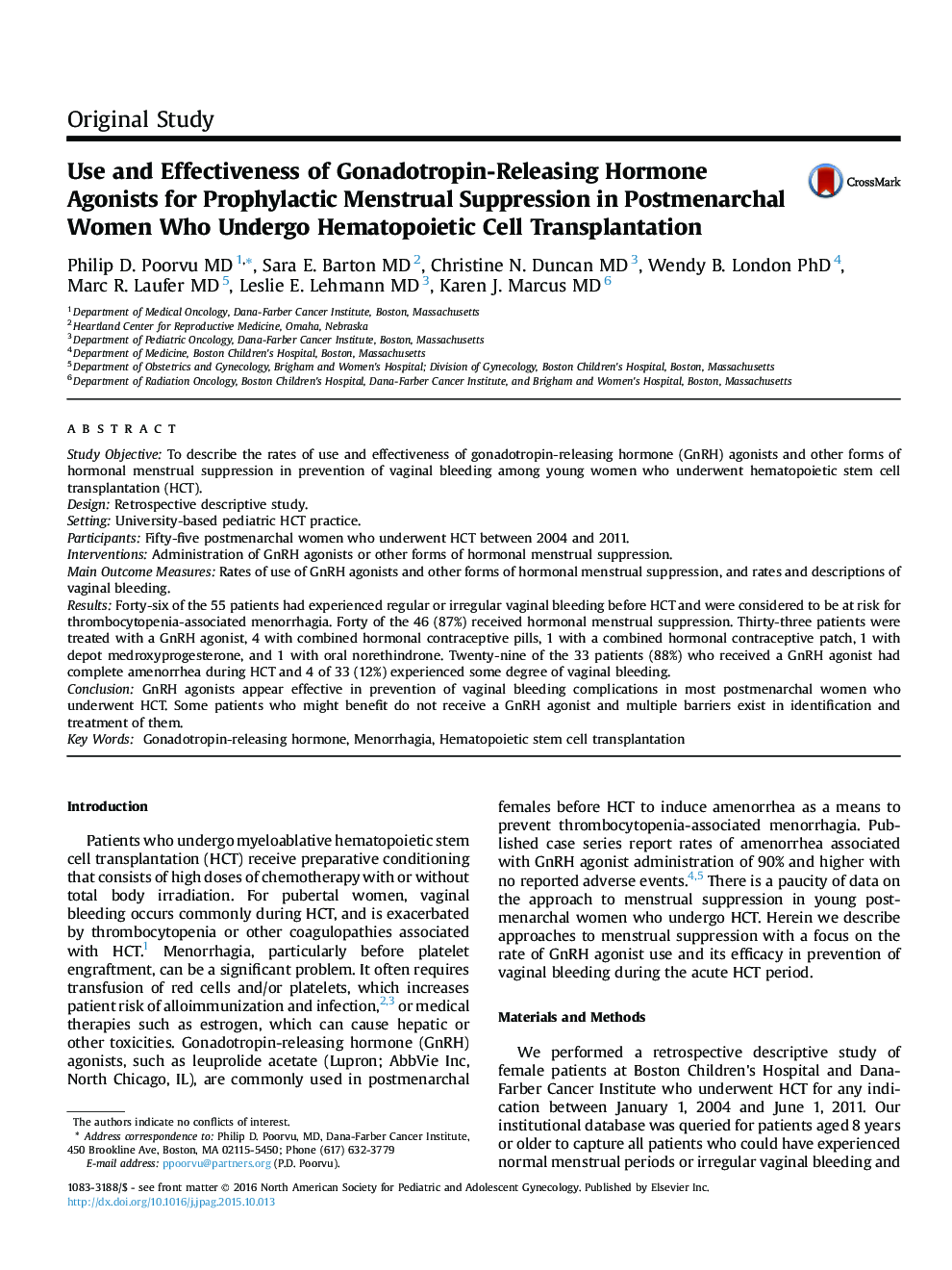| Article ID | Journal | Published Year | Pages | File Type |
|---|---|---|---|---|
| 3961179 | Journal of Pediatric and Adolescent Gynecology | 2016 | 4 Pages |
Study ObjectiveTo describe the rates of use and effectiveness of gonadotropin-releasing hormone (GnRH) agonists and other forms of hormonal menstrual suppression in prevention of vaginal bleeding among young women who underwent hematopoietic stem cell transplantation (HCT).DesignRetrospective descriptive study.SettingUniversity-based pediatric HCT practice.ParticipantsFifty-five postmenarchal women who underwent HCT between 2004 and 2011.InterventionsAdministration of GnRH agonists or other forms of hormonal menstrual suppression.Main Outcome MeasuresRates of use of GnRH agonists and other forms of hormonal menstrual suppression, and rates and descriptions of vaginal bleeding.ResultsForty-six of the 55 patients had experienced regular or irregular vaginal bleeding before HCT and were considered to be at risk for thrombocytopenia-associated menorrhagia. Forty of the 46 (87%) received hormonal menstrual suppression. Thirty-three patients were treated with a GnRH agonist, 4 with combined hormonal contraceptive pills, 1 with a combined hormonal contraceptive patch, 1 with depot medroxyprogesterone, and 1 with oral norethindrone. Twenty-nine of the 33 patients (88%) who received a GnRH agonist had complete amenorrhea during HCT and 4 of 33 (12%) experienced some degree of vaginal bleeding.ConclusionGnRH agonists appear effective in prevention of vaginal bleeding complications in most postmenarchal women who underwent HCT. Some patients who might benefit do not receive a GnRH agonist and multiple barriers exist in identification and treatment of them.
